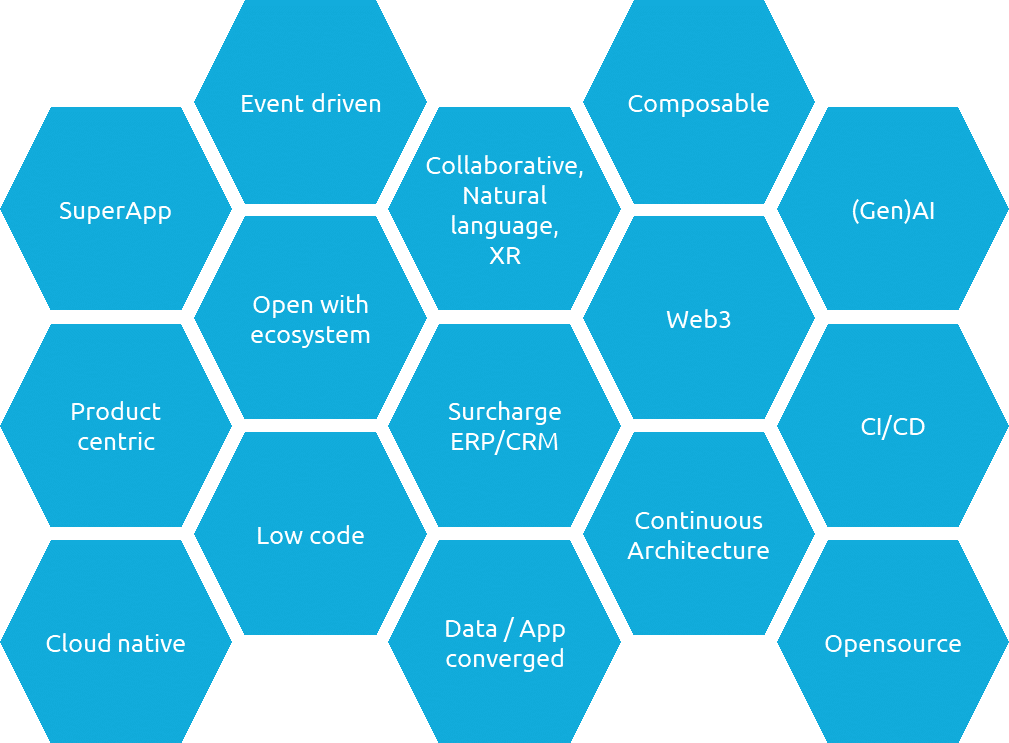The industry of mobile application development is transitioning at lightning speed. The booming app ideas and growing interest of users have inspired app developers to take a step further and change their outlook in building an app. The constituents of various applications look different from what they used to be a few years ago. From the approach to its architecture, every minute detail is taken care of to offer the best user experience unlike ever before.
App metamorphose is the term used to describe the evolution of applications in the current data-driven age. As the mobile app industry is a significant contributor to the economy worldwide, the transformation is the need of the hour. By the year 2025, the mobile app industry is expected to reach 613 billion USD, as per the Statista Digital Market Outlook. To suffice these requirements, developers are working on key aspects to create gen-next apps.
This blog will take you through the phenomenon of app metamorphose. It will cover areas like how an application is developed and consumed. Plus, the discussion will briefly highlight the potential role of custom code versus low code in app development.

How an Application is Developed in 2023?
Mobile and web applications are integral parts of everyone’s life today. From ordering something to hosting a meeting, we depend on apps to easily carry out numerous functions. For an intriguing and fruitful user experience, developers consider various aspects while building an app, some of which are discussed below.
Cloud Native
As per the Cloud Native Computing Foundation (CNCF), cloud native implies an approach to developing and running applications that rely entirely on cloud computing. The approach is based on key technologies, including microservices, API (Application Programming Interface) containers, and managed services from cloud providers. Developers are utilizing cloud-native capabilities to host applications regardless of the platform.
Continuous Architecture
In the field of application development, adopting a continuous and modular approach is paramount. For that reason, continuous architecture emerges as a strategic response to the unpredictable world of applications. It focuses on the adaptability of applications to accommodate the transforming needs with time. The motive of having a continuous architecture is not merely developing a feasible app for the present times, but it should also have the flexibility to evolve with the changing requirements.
Event-Driven Approach
To successfully mitigate the current demands, it is critical to develop applications that minutely respond to user actions and external triggers. Unlike traditional approaches, an event-driven approach takes you through a more agile and user-centric application rather than a static model. By analyzing user interaction and aligning it with application behavior, the event-driven approach becomes a foundation. It enables applications to act in real-time by reacting to user needs.
Data and App Convergence
There is a transformative shift from the traditional separation of data and integration platforms to a unified model. This shift is crucial as applications do not just serve as data containers; rather they are an integral part of a coherent ecosystem.
Business logic
Complexity of integration and orchestration between systems (SaaS, cloud native applications, legacy applications, extended enterprise with subsidiaries or partners), the maintainability required in an iterative world in perspective of the different technical options available redefine the way of designing, implementing, locating, and running the application business logic.
Business logics are now:
- created in visual designer interface, going beyond from code sequence to workflow handling complex orchestration triggers, conditions, states, and error handling.
- isolated in serverless functions or low code automation to support modularity in development and scalability in execution.
- not just on server side, Smart contract on blockchains, Webassembly in web browsers or Serverless on Edge devices open up new horizons to support trust, customer centricity, and efficiency.
Headless Applications
An innovative solution, headless applications expose applications through a collaborative channel instead of a dedicated front end. It is a significant approach as it allows users to interact via multiple channels like WhatsApp or Teams. The end of reliance on a specific website for each application signifies a user-centric shift, offering further flexibility and personalized user experience.
Natural Language Interaction
The contemporary applications have simplified functions by utilizing natural language interactions. From initiating tasks to making queries, it is all possible through conversational language. By bidding farewell to the traditional graphical interfaces, developers have opened new paths for users to engage with the application intuitively.
The Role of Custom Code vs. Low Code in Application Development
For facilitating rapid application building, a low code development process is an ideal option. It is an agile coding method that does not require the kind of expertise that a custom code demands.
While low code solution is inexpensive, custom code is far more user-friendly and pays heed to the requirements of a business. By utilizing a drag-and-drop interface, a low code interface enables businesses to swiftly select features and layouts without much hassle.
Custom code stands out as a vital tool that most businesses seek for developing an app for their services or products, although low code is a befitting option for applications with minimal needs. It is a front-to-back process used to curate a distinct and personalized app. This ensures a company has an increased ROI and witnesses amplified user satisfaction.
In the current scenario, a custom code app development process is an ideal solution. It is a way in which a company can enhance its customer satisfaction levels through its app. With that, custom code also reduces the risk of security threats as businesses are provided with full control over each toll associated with security assurance.
Conclusion
The area of app development has a promising bright future as most companies wish to offer app services to their customers. App metamorphose has become an inevitable need with the transforming requisitions of customers. Developers are moving ahead and targeting a future where a user-centric approach takes center stage, so custom code application development is leveraged. This shift is not limited to the basal level but instead goes beyond to holistically understand user preferences, their behavior, and smooth integration of applications into their regular lives. Whether it is adopting new technologies, prioritizing security, fostering collaboration, or strategically embracing change, the future is in favor of those who are willing to use the power of App metamorphose.

 English | EN
English | EN 
